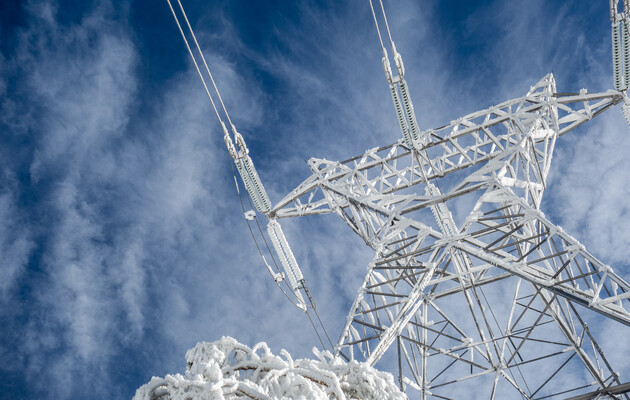Preparing For Winter: Sandbags And Fuel Oil Instead Of Shelters And Gas With Coal
Winter in the energy sector starts in a couple of months, a maximum of two and a half.
What it will be, no one can say for sure. It depends on the temperature, the density and success of shelling, and, of course, on the degree of preparation of the energy system for the cold.
Spoiler immediately – don’t sell the generators you already have. You’ll need them. And there will definitely be power cuts in the winter.
The only question is whether there will be more of them than last winter, or the same number.
By the beginning of spring, 270 missiles and drones had hit the energy system, over a thousand more had been shot down by air defense. More than two-thirds of all hits are at the facilities of the Ukrenergo high-voltage network. Still, thermal power plants, CHP plants, and hydroelectric power stations suffered as well.
The Russians fired everything they could. At the Western Ukrainian Dobrotvirska TPP, even the Kinzhal hit the engine room.
Despite local problems, it was not possible to “turn off” the entire country, although the energy system did fall apart a couple of times, and “stitching” it took about a day. Nevertheless, the energy companies survived.
With the onset of high water on the rivers and the depletion of missiles and drones among the orcs (a pejorative commonly used by Ukrainians to refer to a Russian soldier, based on Tolkien’s The Lord of the Rings), mass bombardments were reduced. Although front-line thermal power plants (such as Kurakhove or Zmyivska ones) are still targeted, and the whole world has seen photos of the ruins of the Kakhovka hydroelectric power station.
Restoration work is going on continuously, literally under shelling.
Sometimes the share of damaged energy infrastructure reached 70%, about a hundred high-voltage transformers (Ukrenergo (national) and Oblenergo (regional)) were “knocked out”.
It is physically impossible to restore all this quickly, it will take years.
In winter, much was patched up in haste, with the raking out of existing reserves. With the warm weather, repair work has intensified – 24 power units of TPPs have been and are being repaired, which is 62% of all planned (that is, 39 units), 32 hydroelectric power plants, or 68% (out of 47 planned), have also been and are being repaired.
There is a repair campaign at the nuclear power plants. Of the nine reactors located in the non-occupied territory, five are working, their repair has been accelerated. In early August, the second reactor of the Khmelnytskyi NPP was launched.
It is the NPP units that are most loaded – more than half of the total electricity production depends on them. Fortunately, the murky schemes in Energoatom are run by one group of people, while completely different people actually work on the reactors.
In Ukrenergo, according to Prime Minister Denys Shmyhal, they have achieved “almost 80% of the work on the repair of main networks; high-voltage substations have already been restored to pre-war levels.”
To be honest, the state of affairs is assessed in Pechersk (the center area of Kyiv with governmental institutions) ... extremely optimistically. There are a lot of important details.
If Rinat Akhmetov’s TPPs of DTEK are more or less being restored (in fact, regarding TPPs, the lion’s share of work on them is repairs performed by this company, when they have already been completed at 17 units and 7–8 more are ahead), then the situation is on the state-owned Centrenergo is almost catastrophic.
The company has historically been a cash cow for admitted officials and “correct” businessmen. In recent years, its management has been changing very often – in five years there have been seven chief directors. And this week there was another attempt to replace the officer.
Meanwhile, Centrenergo was bogged down in debts and courts, both fair and not very fair ones.
All this (suddenly) was superimposed by the war. Last summer, the main station of the company, the Donetsk Vuhlehirska TPP, which provided almost half of Centrenergo’s total output, was occupied.
The remaining two were under shelling all winter. The border Zmyivska thermal power plant was hit by Russians even with anti-aircraft missiles. There they destroyed part of the roof of the turbine hall, damaging the power units. Trypilska TPP did not work for most of December due to the consequences of the shellings.
But since the shelling is the least of Centrenergo’s troubles, with the biggest one being the inability to organize even ordinary work, now only one coal block and a couple of gas ones are operating at the two remaining stations.
Meanwhile, according to the expectations of the Cabinet of Ministers, six “coal” blocks should work there in winter. What on? Nobody knows; the plan for replenishing coal reserves failed miserably. Available is hardly enough even for a week. At the same time, not a single kilogram of coal was accumulated in July at all. And the Trypilska and Zmyivska TPPs play a key role in the Kyiv and Kharkiv energy centers.
Meanwhile, in general, in Ukraine, the plan for coal reserves is modest – only 1.8 million tons at the beginning of the heating season. DTEK (which has its own mines) will certainly fulfill it. But Centrenergo is very unlikely.
That is, in winter, instead of eight blocks (including gas-fired steam), four will work at best. With all the consequences for the capital and the East of Ukraine.
The situation with work at the state mines is ... well, “as always.” Coal mining there has fallen by half compared to pre-war times, which, however, keeps the approaches to reports a la “everything is fine, relax”, but does not add real fuel.
The hope for gas remains. NJSC Naftogaz of Ukraine is not inspired by such plans.
It is understandable, since from the elements of the company’s financial plan that have become publicly available, it is clearly seen that the gas resources of the NJSC are not great.
For the first half of the year, its energy consumption was 1.2 billion cubic meters, and the same amount is expected to be spent before the new year. It’s not even close. Some experts admit that consumption over the winter will significantly exceed 3 billion cubic meters. And according to the best scenario, it would be necessary to buy at least some gas while it was still cheap. But the NJSC did not have any import plans (as well as money for them). Naftogaz is now calling on power engineers to switch to fuel oil to the maximum, which is enough in the country.
Energetics reply to such calls weakly. It is more profitable for DTEK to burn its own coal, and for Centrenergo not its own gas, for which they will not pay anyway. This is the tradition. Multibillion-dollar debts for it have long exceeded the company’s ability to return at least something.
Although it is worth storing fuel oil for the mentioned Kyiv thermal power plant, for example. Kyivteploenergo (provider of services for centralized heating and hot water supply for residents and businesses of Kyiv) reported that in winter the city’s stations were damaged by 60% (including Darnytska cogeneration plant which is “not under its governance”). Repairs are underway in the city, one large block will be restored by autumn, and another one in January. All of them can consume fuel oil.
There is only one problem: fuel oil storage facilities are too obvious a target for Russian aggressors to attack. Kyiv is more or less covered, but the prime minister was not in vain talking about the need for “multi-level protection for energy facilities.”
This is difficult, as about one and a half hundred Ukrenergo facilities require at least passive protection. And there are also regional energy companies and stations ... Alas, you can’t get enough of all the air defense systems.
Plans to create concrete protection for transformer substations, going underground so that neither drones nor missiles could damage distribution substations, were supposed to be completed, at least partially, by the beginning of the heating season. Well, for now, we can only boast that officials instead of the Ukrainian word “ukryttia” (a native word for “shelter”) began to use the English word “shelter” everywhere.
So, there will definitely be no shelters for this heating season. At best, we’ll see foundations of “shelters” and some light shelters, which are sandbags (aka big bags). Unfortunately, it is simply unrealistic to cover all power units even with them, and we are talking about only a part of the key ones. All this is extremely expensive, the amounts are measured in the tens of billions of hryvnias.
By the way, if concrete shelters cannot be made quickly, then Oblenergos will be able to buy additional fire trucks and additional sandbags. It is better for local authorities to check in advance what is happening with the generators and the “Points of Invincibility” (special shelters where citizens can come in case of a long power outage). These will be needed.
To cut a long story short: they have managed to fix/rebuild/restore the destroyed only partially, they have not managed to provide reliable protection of energy facilities, we have little gas, even less coal, and only with fuel oil in the country everything is fine.
It is clear that with the end of the energy terror, power engineers and officials, like the whole country, relaxed. But it seems that they somehow relaxed too much ... It’s time to tighten up.
Read this article in Ukrainian and russian.
Please select it with the mouse and press Ctrl+Enter or Submit a bug












 Login with Google
Login with Google